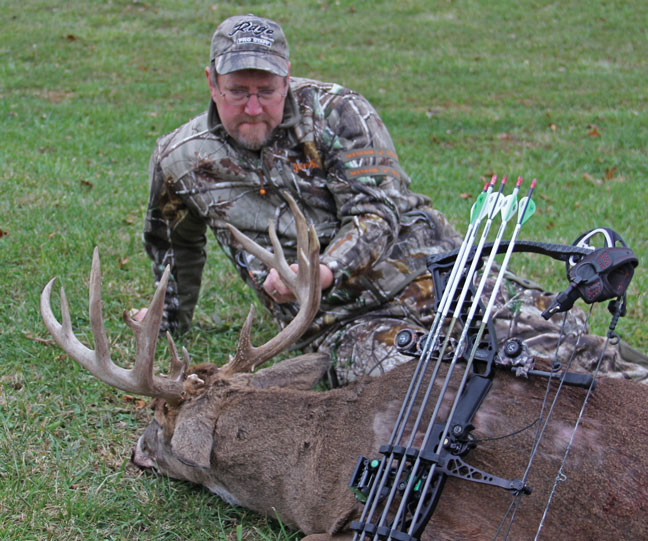When most hunters think of whitetails, the first season that comes to mind of course is fall. It's to us what Black Friday is to an avid Christmas shopper — except we get to enjoy it a lot longer than one day.
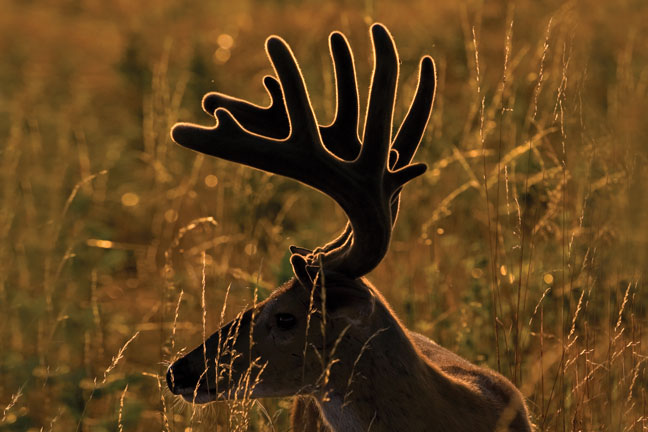
You can't hunt whitetails every day on the calendar, but there's no off-season when managing them.
The great thing about deer management is that the least amount of work is required in fall. That is, if you've made good use of your free time the rest of the year. To get the most out of your deer season, here's what you should be doing in other, less cool (pun intended) times of year on your hunting property.
SPRING
As a deer manager, I consider spring — roughly mid-March through June 1
in the South, mid-April through mid-June in the North — to be the most
critical season for management. Cells are beginning to divide and grow
into velvet racks, fawns are being born, does are nursing, trees are
blooming and forests are coming alive after winter. Regardless of your
geographic location, the health of your herd is largely a result of what
happens in spring.
This time of year, the name of the game is nutrition. There are three methods for increasing available nutrition in spring:
1. Food Plots
Plant large-seeded legumes, such as forage soybeans or lablab, and
ensure the plants can grow to "forage size." That means either planting
enough acreage that your herd won't mow the plots to the ground or
protect them until the plants are big enough to sustain substantial
browse pressure.
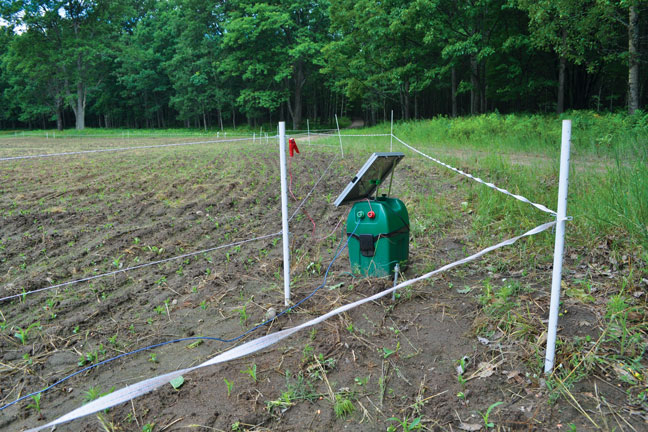
If you have so many deer that they wipe out smaller spring food plots, consider planting far more acreage or using portable fencing to protect plants early. Photo by Gordon Whittington
An average acre planted in either forage beans or lablab will produce in excess of 5 tons of deer food over the growing season. Although these seeds can seem expensive, rest assured that if planted properly and protected where needed, they're among the best sources of whitetail nutrition.
2. Supplemental Feed and/or Minerals
While not universally legal — check local regulations before you do
anything listed below — supplements can help many deer herds. Not every
tract of land has openings significant enough to justify planting spring
food plots, but if it's big enough to hunt, there's at least space for a
seasonal feed station.
When feeding, the specific brand of deer pellet isn't as critical as its contents. There are many high-quality products on the market today. The key components to look for in a spring deer feed are at least 17 percent crude protein, 4 percent fat and 10 percent fiber. You also want a good mineral pack with proper ratios of calcium, phosphorus, magnesium, salt and other trace minerals.
3. Fertilizer
Areas you burned, chopped, cut or mowed in fall/winter now are gathering
much-needed sunlight and attaining the soil temperatures require for
good plant growth. Early spring is a great time of year to fertilize
these "natural food plots."
Lime and fertilizer go a long way toward making native vegetation more palatable and nutritious for deer. When applying fertilizer on young, succulent plants, make sure you do so just prior to, during or immediately after a rain event.
SUMMER
Fawns now are growing at a rapid pace, and antlers are starting to take
their final shape. Your groundwork for summer has been laid by hard work
in spring to get your nutrition plots in, supplemental feed program
started and natural habitat fertilization taken care of.
Maintenance
The keyword in summer is maintenance. That includes maintaining food
plots to control browsing pressure and assure longevity, as well as
controlling weeds. If you've protected your young legume plots with
fences, summer is the time for those barriers to come down, allowing
deer to browse the more mature plants. If your fields are large enough
to have not needed such protection, weed control is likely your
priority.
Interestingly, any protective structure (electric or high fence) usually goes a long way toward keeping weeds at bay. Minus early browsing pressure, many planted forages can outcompete weeds. Consider this when evaluating the cost of a plot-protection system. Where legal, supplemental feed and/or minerals should continue to be available on a free-choice basis.

Summer is largely a time for maintaining habitat and prepping for deer season. Mow to help control undesirable plants and open up hunting access.
Summer's also a good time for general land maintenance, such as road mowing, pruning archery sets, killing wasps in box stands, cleaning up downed trees, etc. You even can get a jump on fall plots by applying herbicide and plowing in August, helping plots "bank" soil moisture before fall planting. But don't plow your beans/lablab in summer — turn only those plots that weren't planted in spring.
FALL
Testosterone levels are rising, triggering antlers to harden and velvet
to peel. Fawns' spots are fading, and your excitement level for deer
season should be on high.
But fall isn't all fun and games, especially in September. It doesn't matter if you're in the North or South. September means two things: camera surveys and hunting food plots (or at least prepping to do so, where seasons open later).
Camera Surveys
Not everybody will do a comprehensive, scientifically valid trail camera
survey of their deer herd, and that's understandable. But I'd venture
to say almost every deer hunter today is familiar with trail cameras and
their worth as a management tool.
I believe a well-run camera survey is perhaps the greatest management tool a landowner or land manager can use. It can tell us the buck:doe ratio, age structure of bucks (and, to some extent, even does), herd density and fawning rates. Of course, cameras also can help tremendously in figuring out where deer live and how to hunt them.
It's my belief camera surveys should be run after bucks have shed their velvet, thus providing photos in hard antler and also in the body condition form/shape bucks are likely to be seen in during hunting season.
Information on how to conduct a survey or who can do it for you is easily found on the Internet. If you don't run a full survey, at least decide on harvest objectives with other hunters on the property and use the photos to set realistic goals on which deer to harvest and which to pass on.
Fall Food Plots
I'd say 85 percent or more of deer hunters only plant food plots for
fall. The reason is simple: That's when deer season is, and people like
to hunt around food sources. Food plots are legal in every state and
province whitetails inhabit, and their attractiveness makes them
extremely popular with hunters.
But fall plots also serve another purpose: They provide nutrition for deer going into the key winter stress period. This nutrition is important for post-rut bucks and newly bred does, as well as fawns, helping them reach spring in good condition.
I prefer to plant commercially available mixes in my fall plots, offering a variety of plants. A mix with cereal grains, brassicas and clover covers my bases from September (young, succulent cereal grains) all the way into June (lush clover) and everything in between.
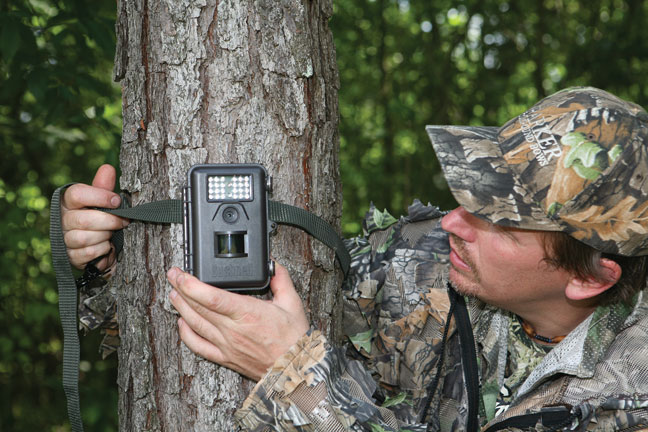
While most fall use of trail cameras involves finding and patterning deer to hunt, these tools also can yield key data for managing whitetails. Photo by Ron Sinfelt
Planting rates and germination timing are important in fall plots. If a mix suggests a planting rate of 45 pounds/acre, don't plant 80 just because you have that much seed. The resulting plot will be dominated by whatever plant in the mix the deer tend to stay away from early, thus eliminating the variety in the plot and making it virtually a monoculture. This is the most common mistake I see in fall food plots.
The other big mistake I see a lot of is planting on a scheduled "work weekend," instead of waiting for conditions to be right prior to planting. Sometimes this can't be helped, and timing in the fall is slightly less critical than timing in the spring planting (due to drought). But if you can choose, the very best time to plant a fall food plot is just after a rain into moist soil — especially if you already have cooler nighttime temperatures.
WINTER
For most hunters, as winter hits, deer season is winding down, and there
are a lot of "it's the holiday season . . . you need to be home more"
arguments being made. So for the sake of happier marriages, I'll define
winter as Jan. 2 - March 1, regardless of geographic area.
This also coincides with the dormant season for trees. That's important to note, because trees will be the focus of our winter management efforts. Whether you're pruning existing trees, transplanting preferred species around the property, planting new orchards, reforesting clearcut land or using prescribed fire, you should be doing it during winter.
Planting hard and soft mast (fruit) trees can be a great way to attract deer to your property all year, as well as potentially provide you with great places to hunt. First, you have to choose the area in which you'd like to establish your orchard or grove. When selecting a site, remember all mast-producing trees thrive with exposure to the sun, so as a general rule you want to plant them "facing" south or with a southern exposure.
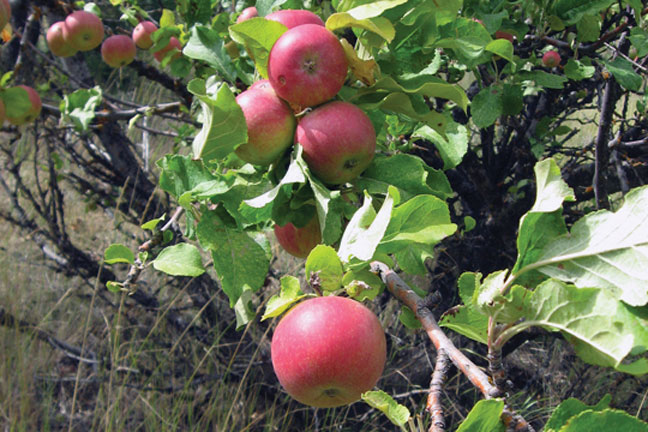
Planting fruit trees during the dormant days of winter can help your herd — and your hunting — down the line. Photo by Gordon Whittington
I like to plant groupings of trees that eventually will provide attractive food from August into December, thus remaining attractive for the bulk of deer season. The way to do this is through variety. In the South, I like plums, pears, grafted persimmons, oaks and chestnuts; in the North I like the same varieties but generally substitute apples for pears, as they tend to produce better in places with long, cold winters.
Budget and patience will likely be the deciding factors on the sizes of trees you plant. A happy medium is to plant one to two large-class trees per orchard, so you can have instant gratification and in many cases produce fruit the first growing season. Remember: Most trees (especially those yielding soft mast) produce more fruit when cross-pollinated with a similarly timed tree of a different cultivar. Always plant fruit trees in groups of two or more for this reason.
IN CONCLUSION
Spring, summer and winter all wish they could be fall, but somehow they
always come up short in a hunter's eyes. However, fall success might
well be dependent on the work you complete in those other seasons.
If you only take away one lesson from this article, it should be this: The deer you hunt in fall aren't grown then. But we can have a tremendously positive impact on herd health and buck quality by providing adequate nutrition each spring and maintaining that nutrition through summer, while deer are growing. Then, in fall, we can use modern management tools such as game cameras to plan our hunts and harvest as well as plant plots to carry deer through the rigors of winter.
Finally, in winter we can use dormancy to our advantage and take care
of all matters concerning trees and their production, which will
ultimately lead to better nutrition.
In short, there's always something to be doing with deer. So let's get started doing it!

